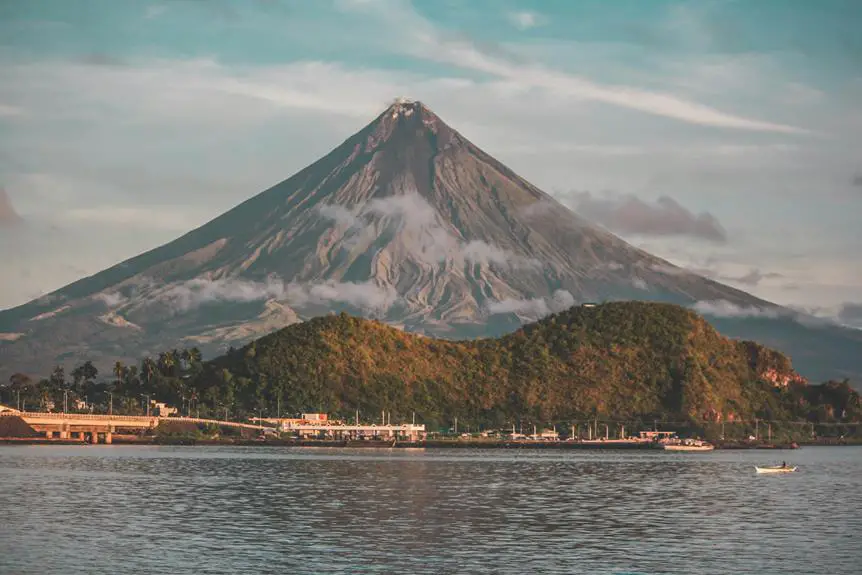Contents
hide
Key Takeaways
- Mayon Volcano in Albay is the most active, with a perfect conical shape and 47 eruptions.
- Taal Volcano in Batangas forms a lake within a volcano, impacting regions like Metro Manila.
- Mt. Kanlaon in Negros Oriental is the third most active, offering diverse attractions for visitors.
- PHIVOLCS monitors volcanic activity to enforce safety measures and protect nearby communities.
Mt. Mayon in Albay
Nestled in the picturesque province of Albay, Mt. Mayon proudly stands as the most active volcano in the Philippines. Its majestic and near-perfect conical shape makes it a breathtaking sight in the heart of the Bicol region. Despite its captivating beauty, Mt. Mayon has a tumultuous eruptive history, with at least 47 recorded eruptions to date. Among these, the 1814 eruption stands out for its sheer destructiveness, reshaping the surrounding landscape and leaving a lasting impact on the region. Monitored diligently by the Philippine Institute of Volcanology and Seismology (PHIVOLCS), Mt. Mayon unexpectedly unleashed a tragic eruption in 2013, claiming the lives of climbers who were drawn to its alluring yet dangerous slopes. This event served as a stark reminder of the raw power and unpredictability of volcanic activity, underscoring the risks associated with exploring such natural wonders. Despite the potential dangers, Mt. Mayon continues to attract tourists from far and wide, offering them a rare opportunity to witness firsthand the awe-inspiring forces of nature at play. Its status as a popular tourist destination in the Philippines persists, serving as a testament to the enduring allure of this iconic volcano.Taal Volcano in Batangas
Taal Volcano in Batangas, known for its unique geological formation of a lake within a volcano within a lake, stands as a fascinating natural wonder in the Philippines. This active volcano has a history of more than 30 recorded eruptions, impacting regions such as Metro Manila, Central Luzon, and Pangasinan. Despite its volatile nature, Taal Volcano remains a popular tourist destination, offering a mix of adventure and breathtaking views for visitors. In early 2022, the volcano exhibited increased activity, leading to enforced trekking restrictions to ensure public safety and mitigate risks associated with volcanic disturbances. Located in Batangas, the Taal Volcano’s geological feature of a lake within its crater adds to its allure, drawing in tourists seeking a glimpse of this extraordinary phenomenon. Over the years, the volcano’s eruptions have left a mark on nearby areas like Metro Manila, Central Luzon, and Pangasinan, underscoring the volatile nature of this geological marvel. Despite the inherent risks, Taal Volcano continues to captivate travelers with its beauty and mystique, prompting authorities to implement measures like trekking restrictions during periods of heightened volcanic activity to safeguard both visitors and nearby communities from potential harm.Are the Largest Islands in the Philippines also Near Active Volcanoes?
Yes, the 3 largest islands Philippines – Luzon, Mindanao, and Samar – all have active volcanoes. Luzon is home to Mount Mayon and Mount Pinatubo, Mindanao has Mount Apo, and Samar has Mount Bulusan. So, yes, the largest islands in the Philippines are indeed near active volcanoes.
